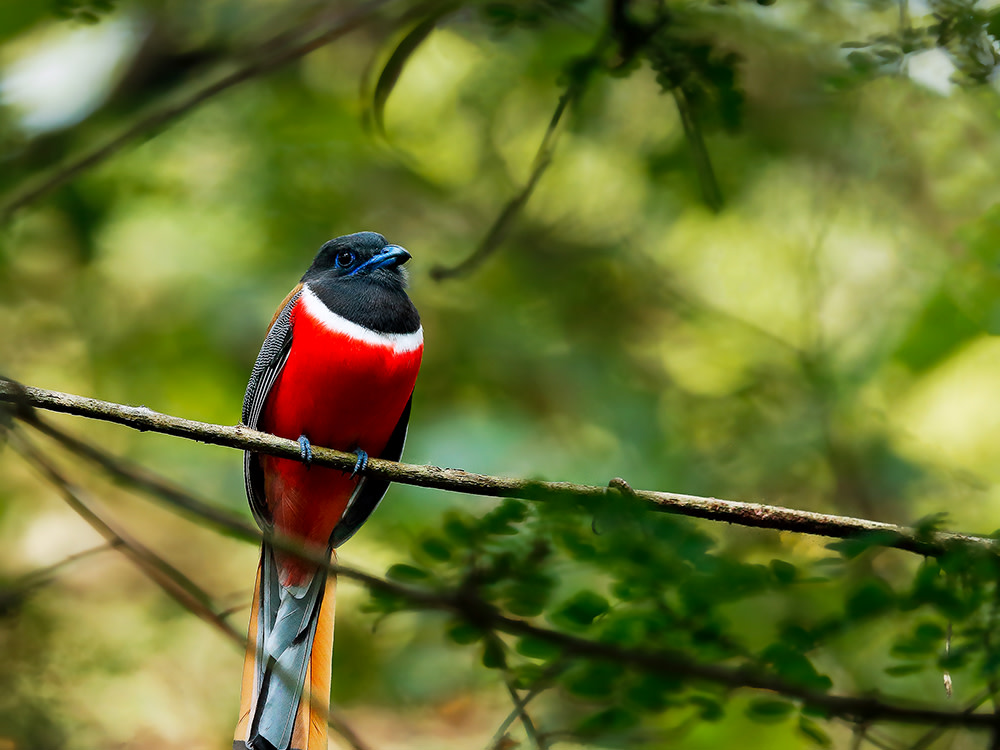 Listen to this article
•
15:34 min
Listen to this article
•
15:34 min
Spotting a Malabar trogon is a guaranteed feather in the cap. The elusive little bird lives in the lush understorey of the Western Ghats, and is known for its stunning plumage and sweet, gentle song. You’d think spotting them would be relatively easy—the males have bright, crimson feathers—but they’re shy birds that prefer to keep to themselves, or their partners at best.
Which brings us to the mating and parenting style of the Malabar trogon.
Like all good love stories, theirs begins with a song. The male perches himself on a visible branch—an important first move in the dense jungles they call home—and begins to sing. If a lady in the neighbourhood likes what she hears, she responds with a tune of her own. They take turns serenading each other for a bit, until they’re convinced they’re found a worthy mate.

Things move pretty quickly from there. Next thing you know, they’re house-hunting together (the test of any relationship!), scanning the jungle for the perfect wooden stump or rotting tree bark to call their home. Once they’ve honed in on a spot, the real work begins. Males and females take turns working to create a cavity in the wood large enough to hold them and their soon-to-be-family.
They do this by biting on the wood branches, reports an academic paper by Varghese Aby P. The study also notes that “trogons face great trouble finding a dead tree that is neither too hard for them to carve, nor so far advanced in decay that it crumbles and will not hold the shape they give the chamber.” While one works, the other is usually perched nearby, singing of course. After a month of painstaking work, they finally get down to making babies.
All members of the trogon family, including the Malabar trogon, display sexual dimorphism, which means males and females look remarkably different. The males have glossy black feathers on their head and vivid red plumage on their breast, divided by a delicate band of white. Their wings are coloured burnt orange and their beaks are indigo blue. Females too share the blue beak, but their plumage is a delicate beige and yellow.
Baby trogons are neither of these. They are born with dark pink skin, without any feathers, and with their eyes closed. But they sure have an appetite. During the first few days, hatchlings are fed only smooth caterpillars, but eventually their diets grow to match their parents, and include leafhoppers, flies, and praying mantis. Five months later, the child leaves the nest, and the parents can finally harmonise in peace again.
Until the following spring, when they repeat the entire process again.
SPOT THEM:
The Malabar trogon is found along the Western Ghats and Sri Lanka. In Goa, they have been sighted in the Mhadei Wildlife Sanctuary and the Bhagwan Mahaveer Sanctuary and Mollem National Park. Numerous wildlife lodges around the Nagarhole National Park and the Anshi-Dandeli Tiger Reserve in Karnataka have reported sightings of the bird, and in Kerala, they can be spotted in the Periyar Tiger Reserve and Thattekad Bird Sanctuary.






